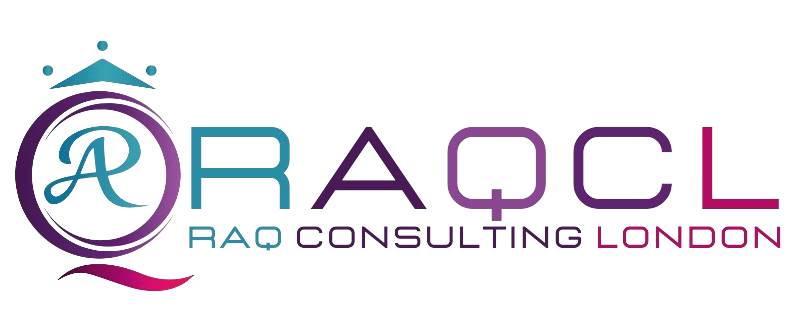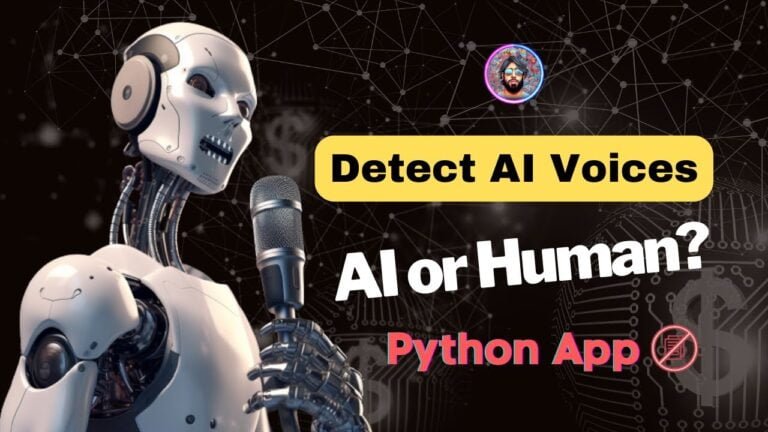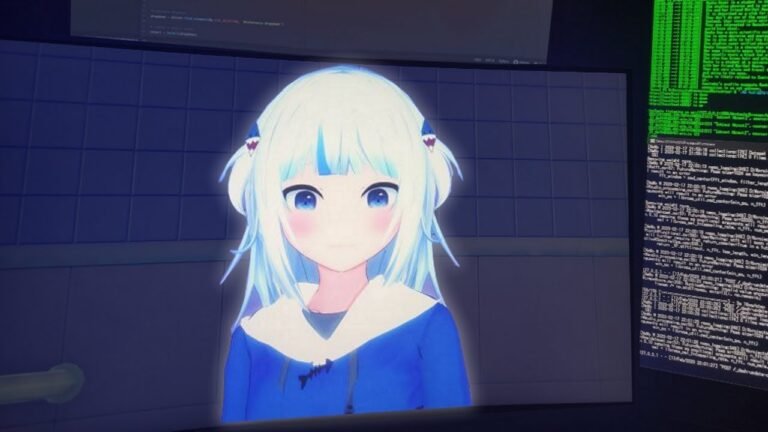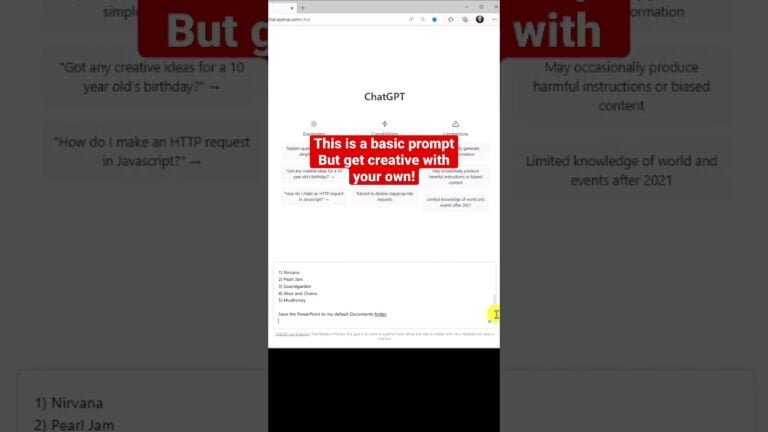Introduction to ChatGPT
ChatGPT, a conversational AI developed by OpenAI, represents a significant advancement in the realm of natural language processing. Originating from the research on generative pre-trained transformers, ChatGPT has evolved through various iterations since its inception in 2020. The technology harnesses deep learning to produce human-like text responses by training on diverse datasets, which include web pages, articles, and books. This enables it to understand context, mimic dialogue, and provide coherent answers to user inquiries.
As of 2025, ChatGPT has found applications across numerous industries, illustrating its versatility and the transformative effects of AI technology on traditional job roles. Businesses harness its capabilities for customer service, content creation, coding assistance, and more. For instance, several organizations employ ChatGPT as a virtual assistant to streamline customer interactions, thus significantly reducing response times and enhancing productivity. Furthermore, its application extends to assisting writing professionals in generating ideas, drafting documents, and even editing text, which raises pertinent questions about the future of jobs related to content generation.
The technology works by utilizing a vast network of neural connections that analyze patterns within text. When a user inputs a prompt, ChatGPT interprets the request by considering the context and generates relevant responses based on learned patterns. This functionality not only underscores the sophistication of the AI but also highlights its potential for job automation. As we advance towards 2025, the conversation around AI, including tools like ChatGPT, will likely center on its implications for employment. As a result, many individuals may ponder the impact of such advanced AI systems on their careers and sectors.
The Current Landscape of AI in the Workforce
As of 2023, the integration of artificial intelligence (AI) technologies into the workforce is widespread and continues to evolve. Various sectors have adopted AI tools, including chatbots like ChatGPT, automation software, and machine learning algorithms to enhance productivity and improve customer experience. This development has significantly impacted roles typically performed by humans, particularly in industries such as customer service, finance, healthcare, and manufacturing.
In the customer service domain, AI chatbots are increasingly used to handle routine inquiries, allowing human agents to focus on more complex issues. Many companies have reported increased efficiency and customer satisfaction due to the timely responses provided by these AI systems. For instance, organizations are utilizing platforms like ChatGPT to generate responses that mimic human conversation, thereby streamlining their communication processes.
The finance sector is similarly experiencing shifts as AI algorithms assist in tasks ranging from fraud detection to risk assessment. By analyzing vast amounts of data more quickly than a human could, AI is enabling financial institutions to make more informed decisions. Healthcare is also seeing innovations, where AI-driven diagnostics and administrative automation are improving patient outcomes and operational efficiency.
Despite these advancements, public perception of AI in the workplace remains a nuanced subject. While many recognize the benefits of AI technologies, such as the improvement in efficiency and productivity, there are also concerns about job displacement. Workers in roles that could be automated express anxiety about the security of their employment, leading to a mixed viewpoint on the utilitarian nature of AI across different sectors.
Overall, the current landscape of AI in the workforce highlights both its potential to enhance job functions and the necessity of addressing the challenges that accompany its integration. Understanding these dynamics is crucial for anticipating the future implications of tools like ChatGPT and their influence on job security in 2025.
How ChatGPT is Expected to Evolve by 2025
As we look towards 2025, the evolution of ChatGPT and similar AI technologies is poised to undergo significant advancements. Primarily, these enhancements will center around natural language understanding, contextual awareness, and emotional intelligence. With ongoing developments in machine learning models, it is anticipated that ChatGPT will exhibit a deeper appreciation for human nuances, allowing for more coherent and contextually relevant dialogues.
The integration of improved natural language processing algorithms will likely enable ChatGPT to grasp complex sentence structures and idiomatic expressions more effectively. This change will result in a more engaging and intuitive interaction experience, making it easier for users to communicate with AI. Furthermore, the system’s ability to learn from vast datasets will allow it to continually refine its understanding of human language, leading to a higher quality of output.
Additionally, advancements in contextual awareness are expected to transform ChatGPT into a more sophisticated conversational partner. By incorporating a better understanding of previous interactions and user preferences, ChatGPT will be able to provide tailored responses that align with individual needs. This capability could significantly broaden the range of tasks that AI can perform in professional settings, enhancing productivity and collaboration between humans and machines.
Furthermore, the emergence of emotional intelligence in AI could revolutionize the approach to human-AI interaction. As ChatGPT develops better mechanisms for recognizing and responding to emotional cues, it may elevate the user experience significantly. This could facilitate a more empathetic and supportive environment, particularly in fields such as customer service, mental health, and education. Overall, the trajectory of ChatGPT’s evolution reveals a future where AI not only assists in mundane tasks but also engages in meaningful exchanges, thereby unlocking the potential for enhanced human productivity and job satisfaction.
Potential Job Displacement: Which Jobs are at Risk?
The advancement of AI technologies like ChatGPT has led to increasing discussions surrounding job displacement across various sectors. As AI systems have become more capable of performing tasks traditionally carried out by humans, certain job roles are perceived to be at greater risk of automation. This section explores specific roles that are particularly vulnerable to displacement by AI and considers the implications of these technologies on employment.
Jobs reliant on routine tasks often find themselves at the forefront of potential displacement. For instance, roles in customer service, where employees respond to common inquiries or resolve standard issues, are increasingly being handled by AI systems like ChatGPT. These platforms can efficiently manage high volumes of customer interactions, providing quick responses that maintain a high level of accuracy. While some level of human oversight remains necessary for complex queries, basic inquiries can be automated, drastically reducing the need for a large workforce in this area.
Content creation also faces significant changes due to AI. Writers, marketers, and content strategists may experience shifts in their job dynamics as systems like ChatGPT can generate articles, advertisements, and even social media posts. Although AI-generated content can lack the nuanced understanding and creativity that human writers provide, its capability for scalability and cost-effectiveness is undeniable, leading companies to explore its integration into their workflows.
Additionally, in industries such as technical support, roles that require troubleshooting and assistance with common technical issues are ripe for automation. AI can analyze user problems and provide immediate solutions, benefiting organizations with reduced response times and increased customer satisfaction. However, this move towards automation could lead to a diminished demand for traditional technical support roles, prompting workers to adapt and acquire new skills as the employment landscape evolves.
As we navigate this changing job market, it is critical for individuals in vulnerable positions to stay informed about AI developments. Understanding how AI will influence job dynamics can aid in preparing for potential transitions in career paths.
The Role of AI in Job Creation
The advent of artificial intelligence (AI) technologies, such as ChatGPT, has sparked a significant transformation in the job market. While concerns about job displacement due to automation and advanced AI capabilities are prevalent, it is essential to recognize the potential for job creation that accompanies these technological advancements. As machines handle routine tasks, new opportunities emerge for individuals to engage in roles that leverage both human creativity and AI functionality.
One emerging area where AI is expected to create jobs is in the management of AI systems themselves. As organizations increasingly utilize AI tools, the demand for professionals who can oversee their implementation and integration is likely to grow. These roles will require a deep understanding of both AI technology and the specific industry in which it is deployed, allowing employees to serve as liaisons between technical teams and business operations.
Additionally, there will be a growing need for individuals who can train AI models, ensuring they are equipped to perform effectively in various tasks. This role, often referred to as AI training specialists, involves curating datasets, refining algorithms, and continuously improving AI systems like ChatGPT to align with evolving user expectations and business needs. The synergy between human expertise and AI capabilities will be crucial in this regard, leading to a new hybrid workforce.
Moreover, as businesses adapt to the changing landscape, hybrid positions will become increasingly common. These roles may combine traditional job functions with AI-enhanced technologies, allowing professionals to focus on strategic decision-making while relying on AI tools for analytics and efficiency. For instance, marketing analysts may increasingly combine their expertise with AI insights to optimize campaigns and improve customer engagement.
In conclusion, while AI presents challenges to certain job sectors, it simultaneously paves the way for innovative roles that emphasize the unique capabilities of humans in conjunction with AI technologies. Embracing this evolution can lead to a more dynamic and efficient workforce, fostering economic growth and new opportunities. The integration of AI, particularly tools like ChatGPT, heralds a new era of job creation where human and artificial intelligence coexist beneficially.
Strategies to Co-exist with AI: Skills for the Future
As artificial intelligence (AI) technologies like ChatGPT and other advanced algorithms continue to permeate various industries, it is essential for individuals to adapt to this evolving landscape. Embracing AI should not be viewed solely as a threat to employment; rather, it can present opportunities for personal and professional growth. To thrive in this environment, individuals must focus on three key areas: upskilling, emotional intelligence, and continuous learning.
Upskilling is crucial in a world increasingly influenced by AI. Workers should seek to develop new competencies that complement AI technologies, ensuring they remain valuable in the job market. This may involve acquiring technical skills, such as coding or data analysis, which can enhance one’s employability and allow for collaboration with AI tools. Moreover, understanding the capabilities and limitations of platforms like ChatGPT will enable professionals to harness these technologies effectively, rather than view them as competitors.
Emotional intelligence and creativity will be vital soft skills for future success. As AI takes over routine tasks, human jobs will increasingly revolve around tasks that require empathy, social interaction, and innovative thinking. Cultivating emotional intelligence can help individuals navigate complex workplace dynamics, foster productive relationships, and drive teamwork. Additionally, creativity is an essential skill that cannot be easily replicated by AI; fostering a culture of innovation will provide a competitive edge in an AI-driven world.
Finally, engaging in continuous learning is imperative. The rapid evolution of AI technologies necessitates an ongoing commitment to education and skill enhancement. Professionals should actively pursue workshops, courses, and certifications that keep them updated on industry trends. By adopting a proactive approach to learning, individuals can position themselves to adapt and thrive in a future where AI plays a prominent role.
The Ethical Considerations of AI in Employment
The integration of artificial intelligence (AI) technologies, such as ChatGPT, into the workforce presents a range of ethical implications that merit thorough examination. As organizations increasingly rely on AI-driven systems for tasks such as customer service, content generation, and data analysis, concerns about bias, privacy, and corporate responsibility arise. One primary concern is the potential for bias within AI algorithms. AI systems are trained on vast datasets that may inherently reflect existing prejudices or societal inequalities. This can lead to AI making decisions that disproportionately affect certain groups, perpetuating discrimination in hiring processes or service delivery.
Another critical aspect of the ethical discourse surrounding AI and employment is privacy. The deployment of AI, including conversational agents like ChatGPT, often necessitates the collection and analysis of personal data. Employees and consumers alike may worry about how their data is used, leading to mistrust. Organizations must not only be transparent about their data practices but also ensure robust security measures to protect sensitive information from breaches, thus maintaining a level of trust in the workforce and customer base.
Moreover, the ethical responsibilities of companies utilizing AI technologies include setting guidelines on accountability. As AI continues to automate jobs, companies must navigate the moral obligations of retraining displaced workers and ensuring fair treatment amidst these transitions. There is also a growing call for regulations to oversee AI deployment, providing a framework that emphasizes ethical standards. Such regulations could ensure equitable access to AI benefits, safeguarding against potential abuses and influencing how organizations implement AI responsibly in the workplace.
Ultimately, fostering a collaborative dialogue between policymakers, ethicists, and industry leaders is essential to develop comprehensive frameworks that govern AI use in employment. This collaborative approach is crucial to ensure fairness and equity as AI continues to evolve and reshape the job landscape.
Real-Life Examples and Case Studies
The integration of AI technologies, especially tools like ChatGPT, has begun reshaping various industries, revealing both the potential advantages and challenges posed by these advancements. A notable example can be found in the customer service sector, where several companies have started deploying ChatGPT-driven chatbots to enhance user experience. For instance, a leading telecommunications provider used AI to handle common customer queries, reducing response time by 30%. This implementation not only improved customer satisfaction but also allowed human agents to focus on more complex issues, thus enhancing overall productivity.
However, not all attempts at integrating AI have achieved such success. A medium-sized e-commerce company experimented with ChatGPT for sales support, aiming to provide personalized product recommendations. Unfortunately, the system misinterpreted customer inquiries on multiple occasions, frustrating users and leading to a drop in sales. This case illustrates the importance of proper training and oversight when incorporating AI technology into business operations. It highlights the fact that while AI can significantly improve efficiency, it is still susceptible to errors that can affect user experience.
Furthermore, the healthcare industry has also begun adopting AI solutions, with mixed outcomes. Some hospitals implemented ChatGPT-based systems for patient triage, which successfully streamlined appointment scheduling and follow-ups. Conversely, another healthcare facility faced regulatory challenges due to data privacy concerns, causing delays and resulting in a less favorable assessment of its AI deployment strategy. These cases demonstrate that while technologies like ChatGPT hold remarkable potential to transform job functions, companies must navigate a complex landscape of ethical and practical considerations to realize their full benefits.
Conclusion: Embracing the AI Revolution
The rapid advancement of artificial intelligence (AI) technologies, particularly models such as ChatGPT, has sparked considerable debate regarding their impact on the job market. As we approach 2025, it is essential to recognize that the emergence of AI is not merely a harbinger of job displacement but rather an invitation to rethink the landscape of work. Job roles will undoubtedly evolve, and while some positions may be automated, many others will be created as industries adapt to incorporate AI tools.
AI, including ChatGPT, has the potential to enhance productivity across various sectors. For instance, businesses can leverage AI to streamline mundane tasks, freeing up human employees to focus on value-added activities that require creativity, critical thinking, and emotional intelligence. This shift could redefine job roles rather than eliminate them, facilitating a partnership in which humans and AI systems coexist to achieve greater outcomes.








